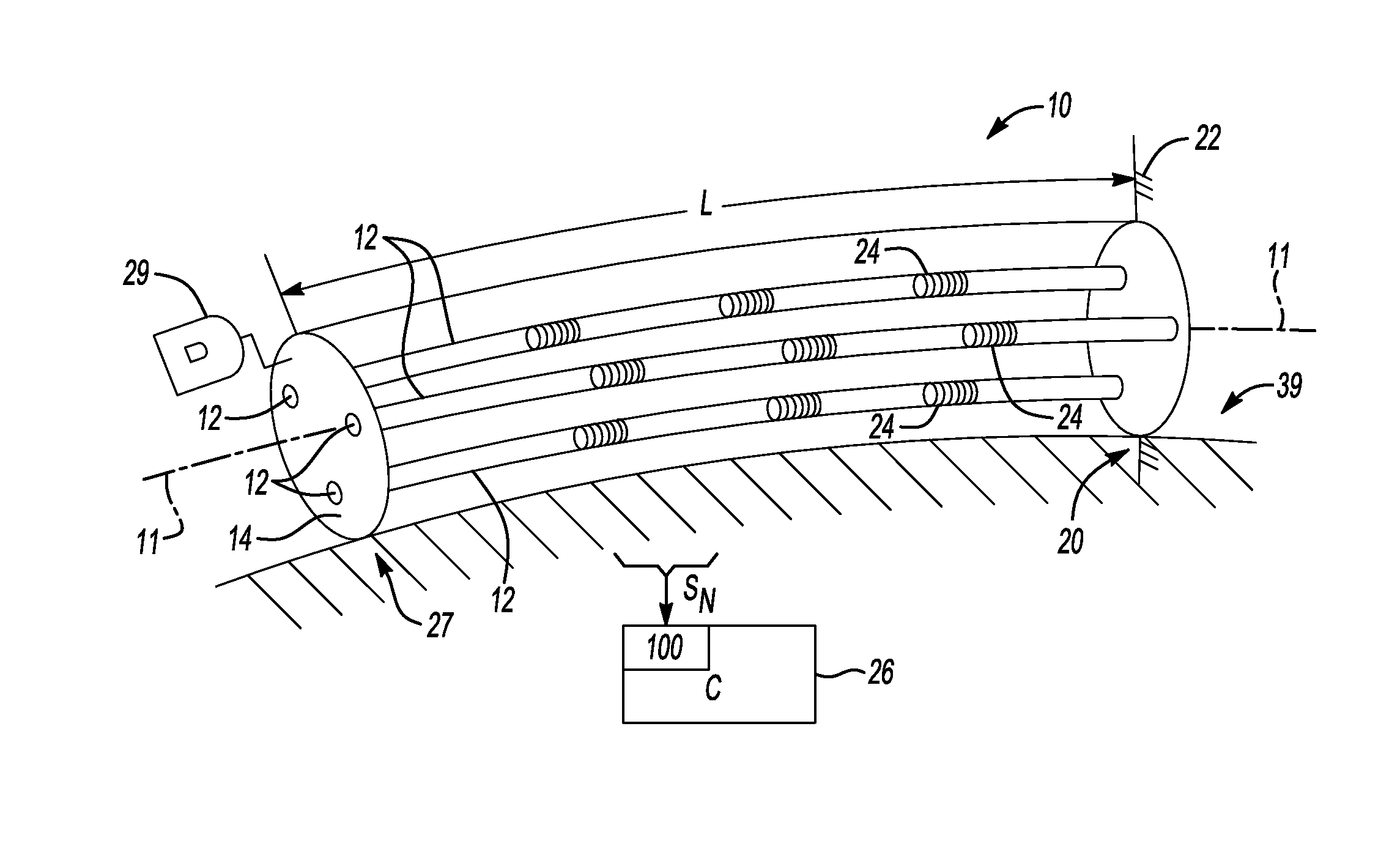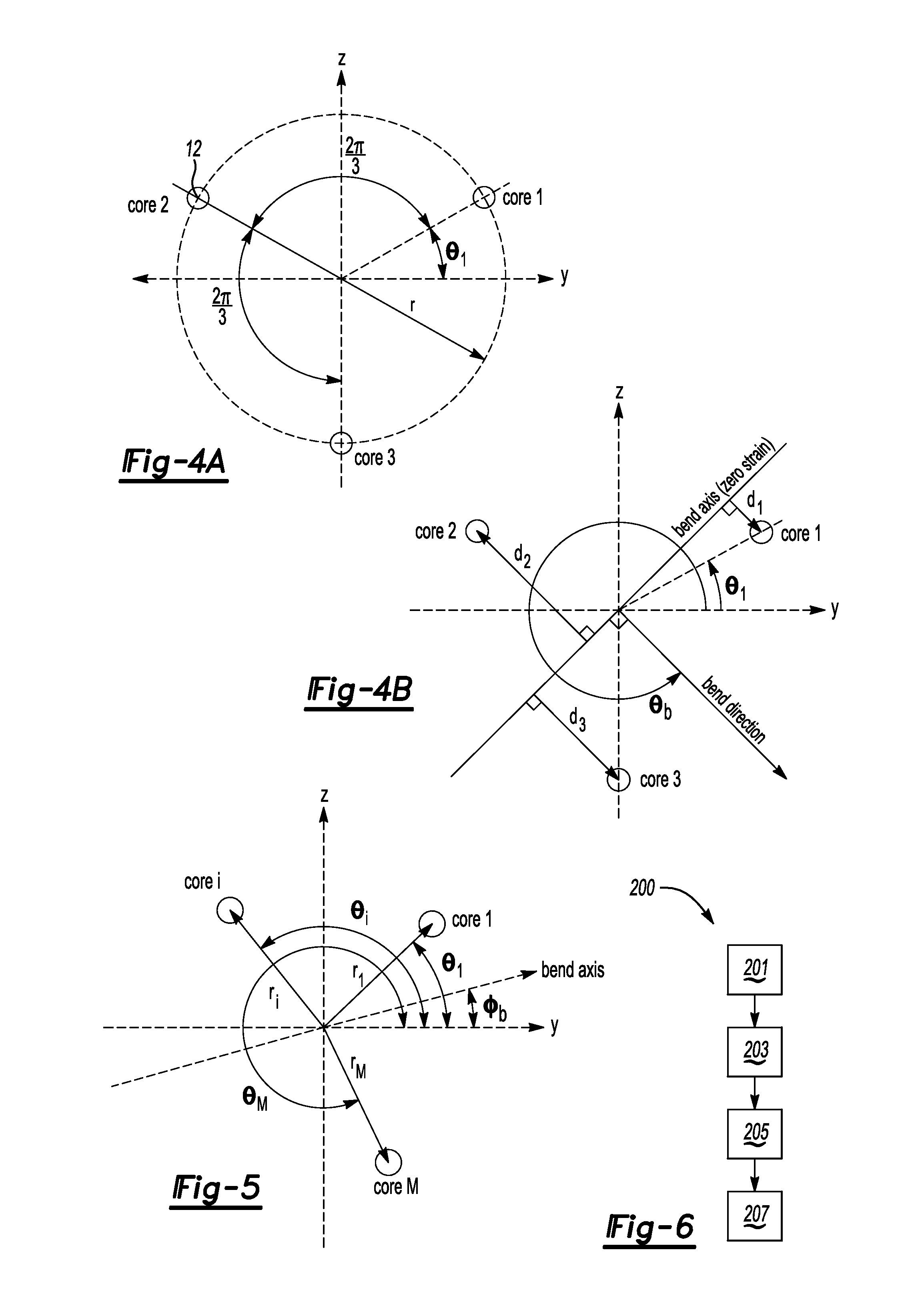Shape Sensing Using a Multi-Core Optical Fiber Having an Arbitrary Initial Shape in the Presence of Extrinsic Forces
a multi-core, fiber optic technology, applied in the direction of force measurement, force measurement, force measurement, etc., can solve the problems of insufficient account of extrinsic forces in the prior art, insensitive to external strain-inducing effects of present curvature calculation approach, and inconvenient use of current curvature calculation method
- Summary
- Abstract
- Description
- Claims
- Application Information
AI Technical Summary
Benefits of technology
Problems solved by technology
Method used
Image
Examples
Embodiment Construction
[0026]Referring to the drawings, wherein like reference numbers represent like components throughout the several Figures, an overview of the basic construction of a multi-core fiber optic cable 10 is presented first with respect to FIGS. 1 and 1A. This description is followed by an explanation of how a controller 26 may be used to execute the present method 100, an example of which is shown in FIG. 2, in order to calculate strain and bending data for the cable 10 when initialized from an arbitrary initial shape, which may be straight or non-straight. Additionally, the controller 26 does not require an initial zero-strain state to function, and thus overcomes limitations of prior art systems in this respect. The handling of external / extrinsic forces on the cable 10 is discussed below with reference to FIGS. 5 and 6.
[0027]The example cable 10 of FIG. 1 has a longitudinal axis or centerline 11 and a length (L). A plurality of light-guiding cores 12 are arranged within the cable 10. A t...
PUM
| Property | Measurement | Unit |
|---|---|---|
| shape | aaaaa | aaaaa |
| curvature | aaaaa | aaaaa |
| length | aaaaa | aaaaa |
Abstract
Description
Claims
Application Information
 Login to View More
Login to View More - R&D
- Intellectual Property
- Life Sciences
- Materials
- Tech Scout
- Unparalleled Data Quality
- Higher Quality Content
- 60% Fewer Hallucinations
Browse by: Latest US Patents, China's latest patents, Technical Efficacy Thesaurus, Application Domain, Technology Topic, Popular Technical Reports.
© 2025 PatSnap. All rights reserved.Legal|Privacy policy|Modern Slavery Act Transparency Statement|Sitemap|About US| Contact US: help@patsnap.com



